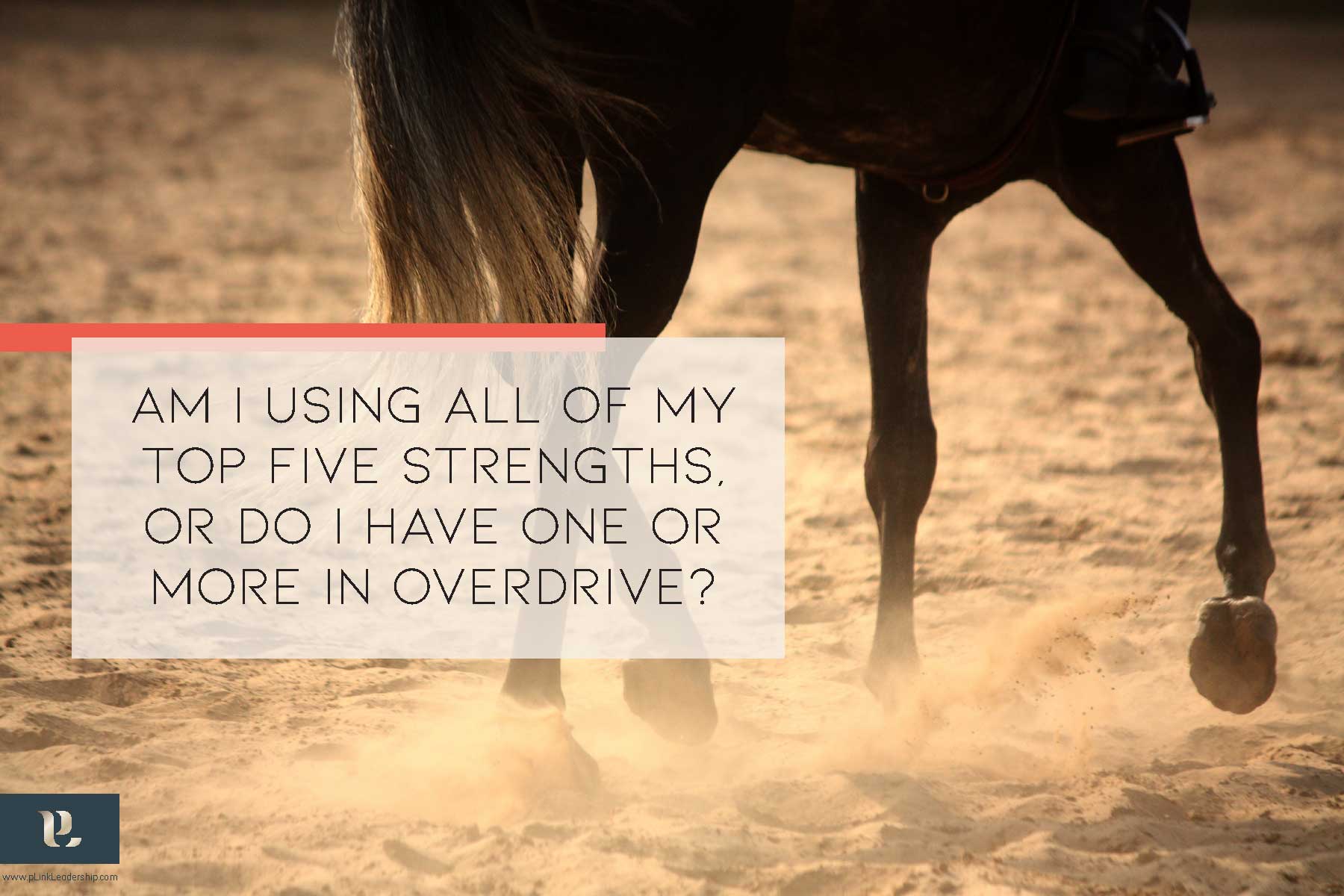I am a “can do” type of person, whether at home or on the job. Achiever and Responsibility are two of my top Gallup Strengths, and I’ve invested time developing these over the years. Given a task or project, I can easily jump in and go it alone, and forget that I can brainstorm, share the load, or allow others to assist. However, these strengths in overdrive can become liabilities when I’m working with a team.
I often see this “do it by myself” pattern showing up in Equus Workshops (coaching activities with people and horses). On one occasion, four leaders were working together in a herding exercise. The task was to work together as a team in the arena (with no verbal language), choose an obstacle or obstacles (cones, tarps, barrels, short jumps, etc.), and herd the horse over, around, or through them. At first they were having fun, working together, and then things got interesting. The horse was in the corner of the arena, not moving.
The senior leader was trying his best to move the horse, while the other three members of the team were in the middle of the arena trying to get his attention. From their vantage point, they could see that he was actually blocking the horse from moving in either direction, yet, they didn’t move closer to help.
We stopped to talk about what was happening and surprising information emerged – and not just about the horse in the corner. They each had a different idea about which obstacles they had agreed upon; they were not checking in with each other (eye contact); they were unsure about their roles; and the leader in the corner wasn’t connecting with them, which was frustrating.
What occurred in the arena was mirroring what happens in the office. Decisions are made in meetings and people leave with their own notion of how to go about the tasks, but they don’t check in with each other. The senior leader often takes much of the burden because he feels responsible for the outcome. He was able to experience, in the arena with the horse, how tiring this can be, and how it can block the progress. The team members were playing out their typical roles of staying in the background, thinking they could help, but not moving closer to let him know. At work, these team members would often talk to each other about how they could contribute, but rarely talked to the boss directly about their ideas.
The four leaders used the experience with the horse to create guidelines and intentions to consciously create more positive outcomes:
- Make sure everyone is on the same page (each and every time) about what will be achieved.
- Routinely check in with each other in order to stay connected along the way.
- Review tasks and roles so everyone knows their responsibility and can effectively contribute.
- Take a step back and get a new perspective by asking for input on how things are going.
- Practice openness and empathy when brainstorming or discussing hot topics – this will help each member receive feedback as well as truly understand how the experience is going for others.
These team guidelines have become my inspiration (note the highlighted words)! Connectedness, Input and Empathy are also in my top five (natural talents that I’ve developed and practiced). When I’m working on a project with a team, I routinely stop and ask myself if I’m using ALL of my top five strengths, or do I have one or more in overdrive? This helps me course-correct along the way. Asking for help … and allowing it … also helps!



